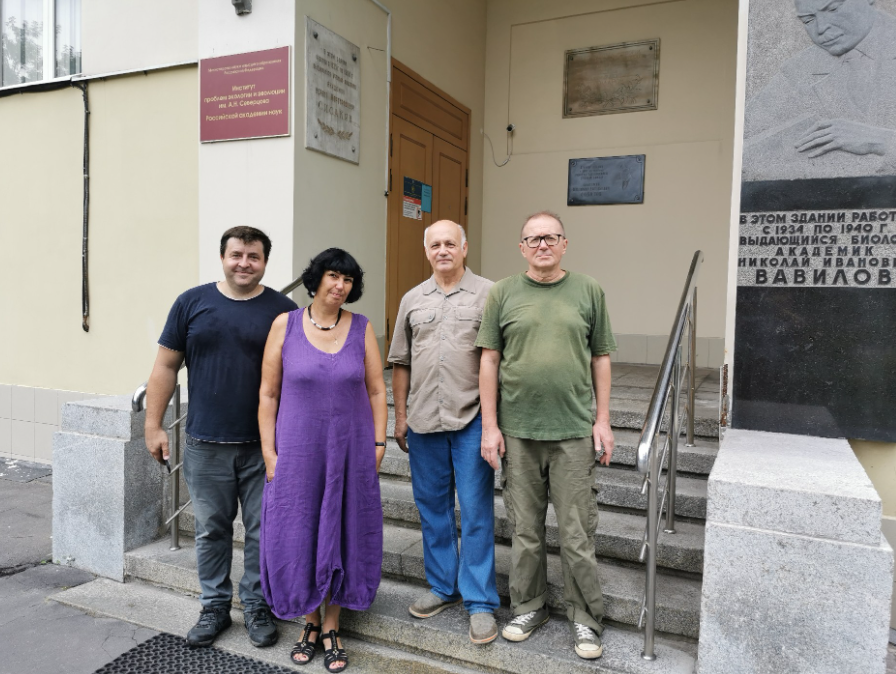
A brief report on the expedition to the Ciscaucasia to study the phylogeography of Palaearctic species of hamsters within the framework of the RFBR grant 20-04-00102a (headed by Doctor of Biological Sciences, Corresponding Member of the Russian Academy of Sciences A.V.Surov).
It is rather widely known that the Caucasus is a refugium for many animal species, including three species of hamsters: the common hamster (Cricetus cricetus), the Raddey hamster (Mesocricetus raddei), and the Brandt hamster (M. brandti), which are the objects of research by the IEE RAS staff. Previously, the DNA of animals from many localities has already been analyzed, but significant territories of the Caucasus have remained unexplored. The main goal of the 2021 expedition was to collect material on hamsters from new regions of Dagestan, Ossetia, Ingushetia and Kabardino-Balkaria. The ciscaucasian hamster (M. raddei nigriculus) was of particular interest as its taxonomic status requires revision.
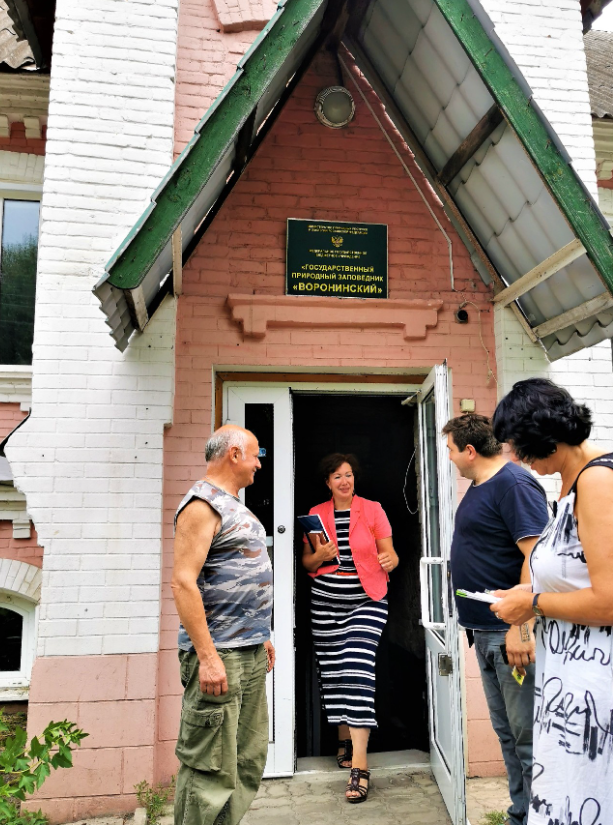
Visit to the Voroninsky State Nature Reserve.
Director of the reserve, Ph.D. Burkanova Olga Anatolyevna
The reserve is situated at a distance from anthropogenic influence -reaching it requires a trek of 5-6 thousand kilometers through the notorious settlements: Buinaksk, Gudermes, Grozny, Mozdok, Argun gorge ... But the trip promised to be not only productive, but also cognitive both in historical and world outlook terms. Transport support was provided by a wonderful person and driver - Eugene by the name of Karlik (it is interesting that this surname comes as a diminutive form of Karl, a dynastic royal name, and not from one of Eugene's relatives being small, which begets the Russian nickname “karlik” - “dwarf”). Companionship on a long trip is important. In addition to the driver, the crew of the "ship" consisted of three employees of the Institute of Ecology and Evolution, a recently defended grant participant Magomed Chunkov, and his supervisor, Dr. Sc. K.Z. Omarov. In addition, across Chechnya the expedition was accompanied by an employee of the H.I. Ibragimov Institute of RAS (Grozny) Daud Arsanukaev, who is entering the postgraduate course at IEE RAS this year.
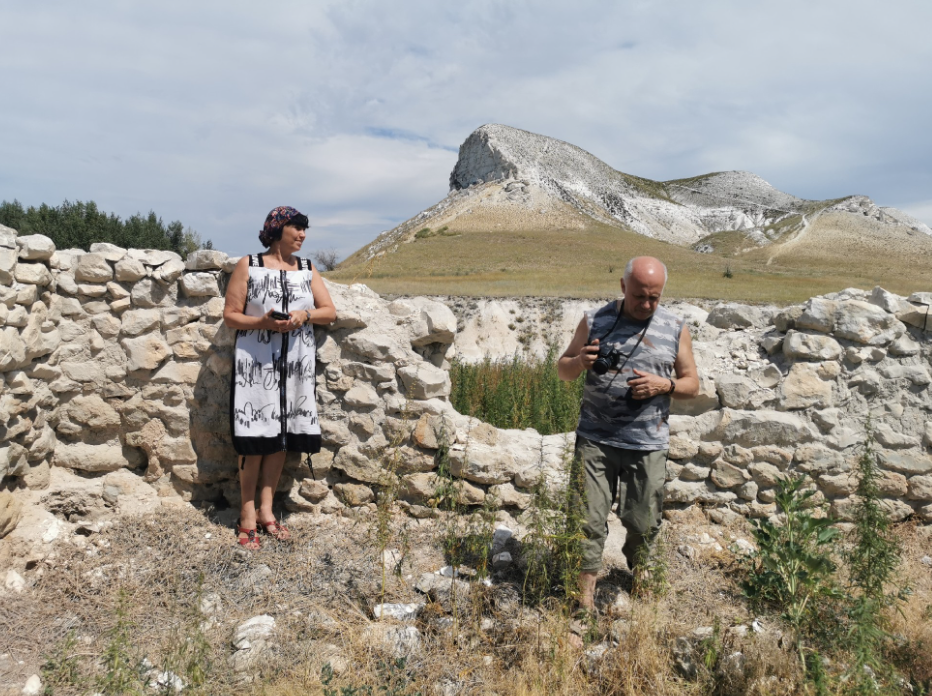
Study of potential habitats of the common hamster in the Donskoy Nature Park (Volgograd Region)
The expedition took place in difficult conditions - a terrible heat of 36-40 degrees. And even the air conditioner in the car did not always help to cope with it. The scientists brought with them a small mascot - a forest dormouse, which was caught in hazel groves on the Don. They decided to bring her to Moscow. She turned out to be an experienced traveler and made a great drive home, and now she is already preparing for hibernation.
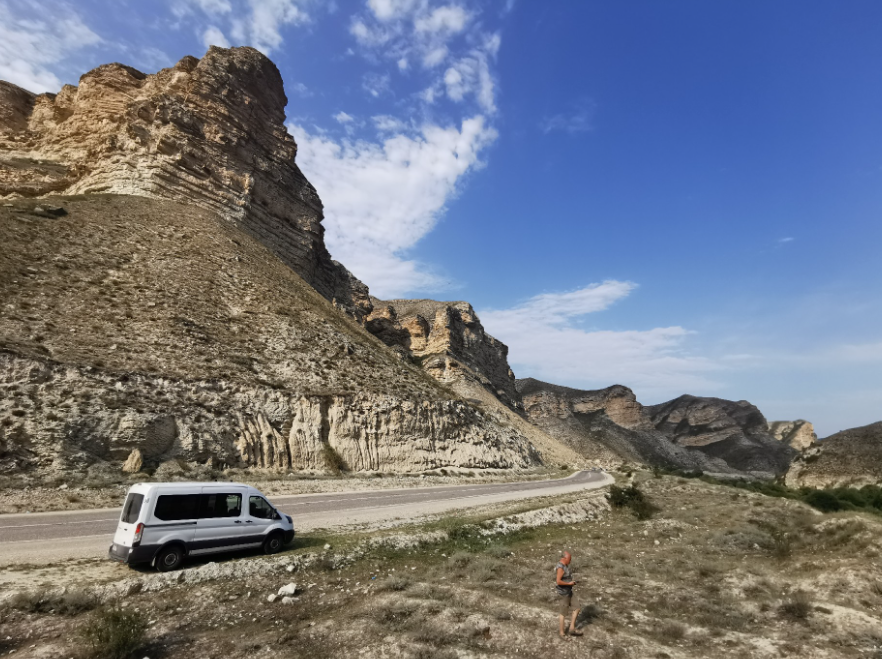
Dagestan mountain roads
The tasks set for the expedition as a whole were completed. The participants drove 6 thousand kilometers in Kalmykia, Dagestan, Chechnya, S. Ossetia, Ingushetia, Kabardino-Balkaria, Stavropol Territory, caught animals, took tissue samples from them for DNA analysis, described characteristic biotopes, talked with local residents and specialists. Unfortunately, apparently due to the long drought, breeding this year was worse than usual, and few hamsters were caught. Nevertheless, with the active help of colleagues, it was possible to collect material from new points. It was also found that the object of the study - common hamster - inhabited two more Caucasian capitals - Grozny and Nazran. Despite all attempts, it has not yet been possible to catch the ciscaucasian hamster, but the search will continue. We hope that the next expeditions will give positive results. In the meantime, the received materials have to be processed.
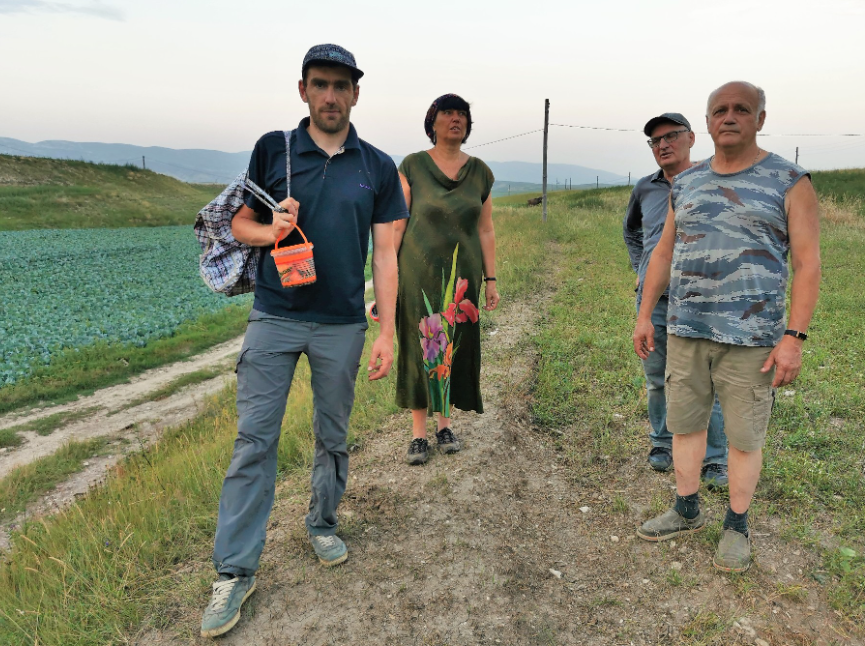
Party preparing to catch Brandt's hamster near the village of Urma (Levashinsky district, Dagestan)
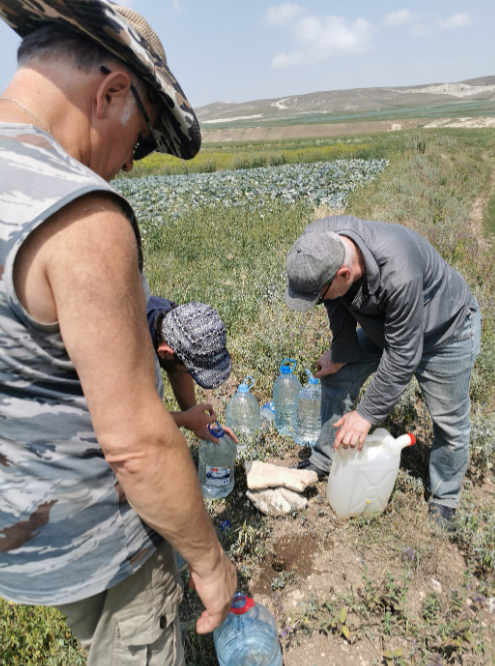
Forcing the animal out of the habitat through temporarily flooding it is a harsh but effective method. The animal is hunted wet, but alive and well, and after 15-20 minutes. after taking the necessary measurements can be released back.
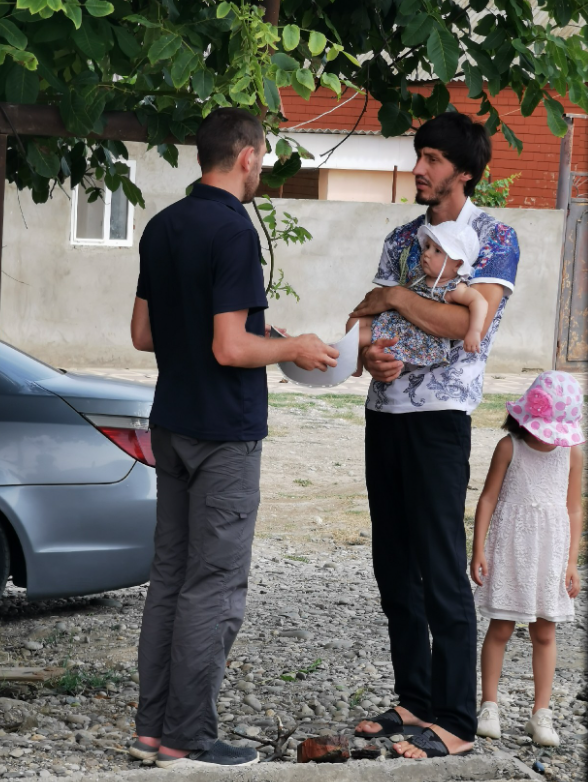
Interviewing the local population. The most reliable method for obtaining information about the presence of hamsters.
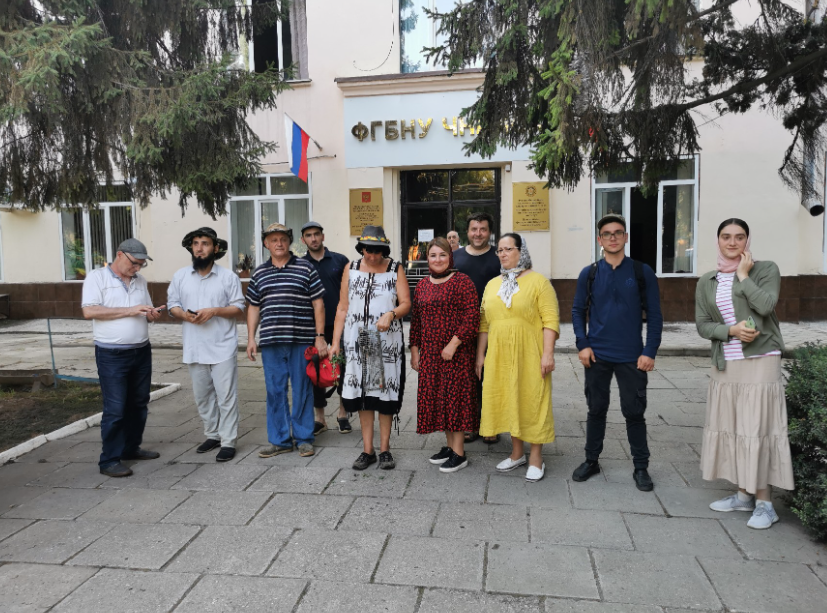
Members of the expedition with the staff of the H.I. Ibragimov KNII RAS at the facade of the building of the agricultural station of the Chechen Research Institute of Agriculture (Grozny).
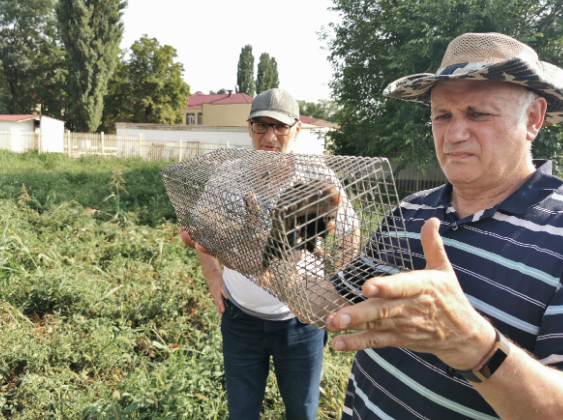
The result of a successful hunt. A common hamster was caught right on the experimental tomato field.
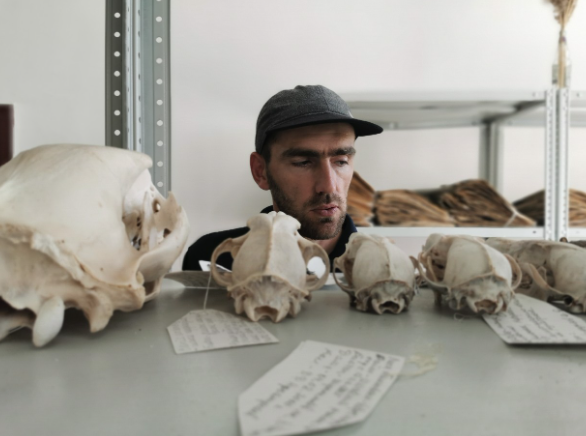
The scientists viewing the collections of the Zoological Museum of the KNII RAS
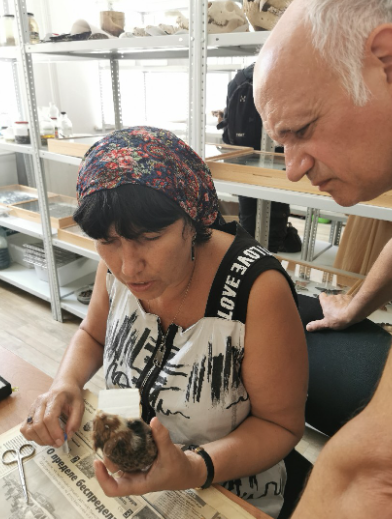
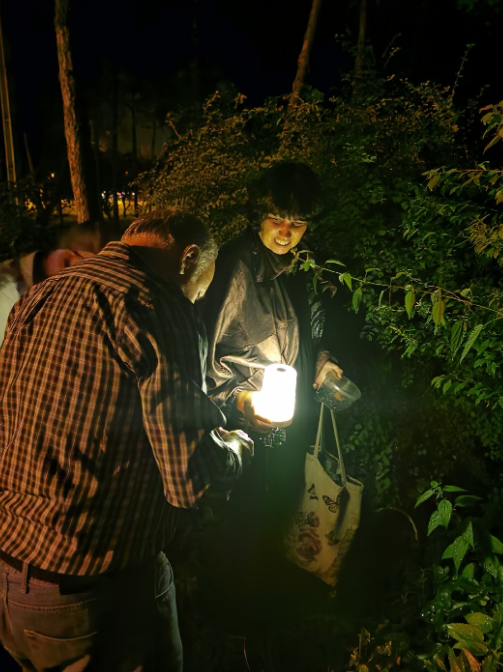
The night watch. An unsucceffful attempt to catch a hamster at night in the city park of Nalchik.
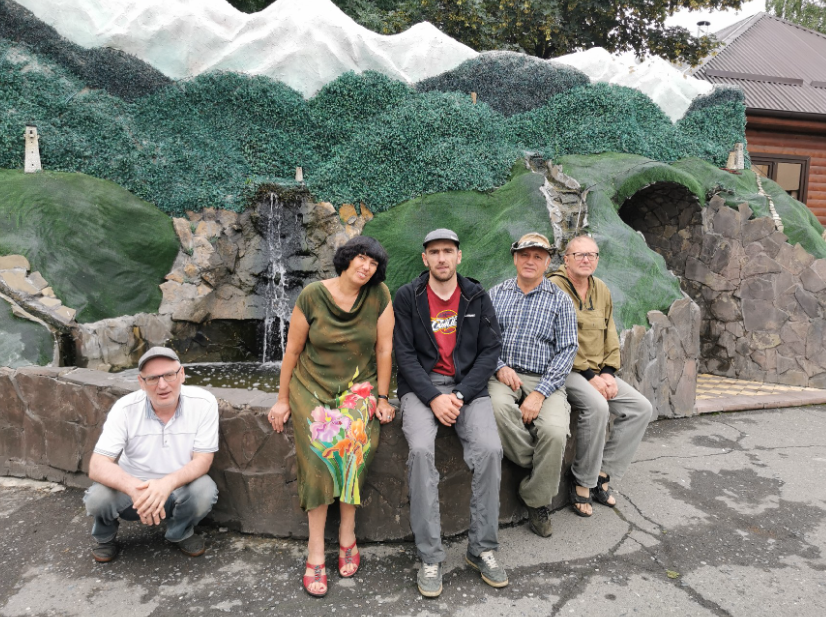
Our team against the background of the "waterfall" and "snowy peaks of the Caucasus" (Nazran)
A.V. Surov
N.Yu. Feoktistova
P.L. Bogomolov
M.M-R. Chunkov
K.Z. Lobster
E.I. Karlik
